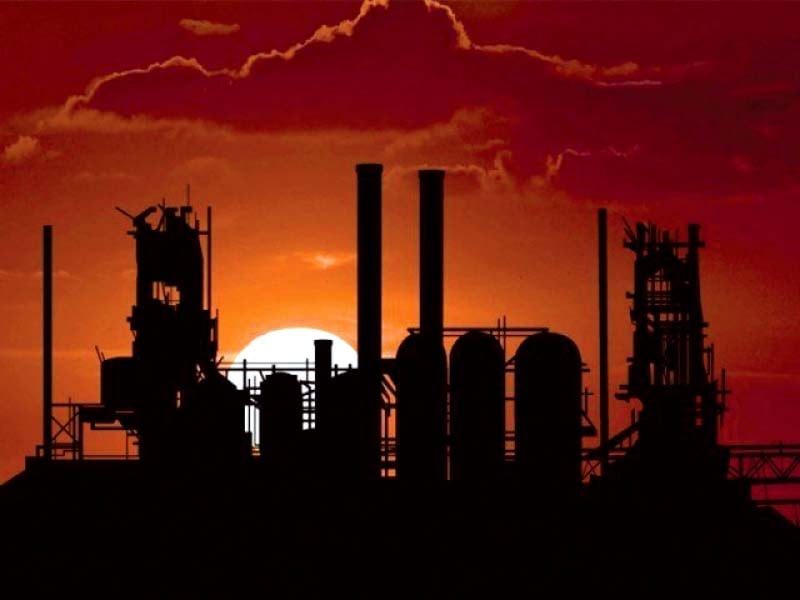
The International Monetary Fund (IMF)-backed first review of Pakistan’s bleeding public sector enterprises has identified 44 entities for privatisation, including the power companies that are causing big losses, despite a 50% reduction in losses in the first year of current government.
The review of 84 commercial state-owned enterprises (SOEs) has been completed as part of the structural benchmarks set by the IMF and supported by the World Bank and the Asian Development Bank (ADB), according to the “SOEs Triage: Reforms and Way Forward” report that the Ministry of Finance released on Thursday.
The report showed that the government would retain 39 SOEs, but would privatise another 44. One company is planned to be liquidated. For the first time, the government has given timelines for the restructuring of the entities that have been retained and the privatisation of remaining ones.
The timelines for privatisation show that no major loss-making firm could be sold before June 2023 – the time when the country would be preparing for next general elections.
The privatisation process for power distribution companies will be completed in four years. This is because of the requirement to first restructure these enterprises and then start the privatisation process spanning months.
The progress on timelines will be monitored by the Cabinet Committee on State Owned Enterprises (CCoSOEs) regularly through the Central Monitoring Unit (CMU) being established in the Finance Division, according to the report.
The SOEs Triage refers to a comprehensive review of the existing SOE portfolio for the purpose of categorisation for retention, privatisation and liquidation. It was initiated in November 2019 as part of the IMF’s structural benchmark.
There are around 212 SOEs including the subsidiaries. But the review report focused only on 85 commercial SOEs that mainly operate in seven sectors.
The report showed that overall revenues of all the SOEs were Rs4 trillion in 2018-19 while the book value of their assets was Rs19 trillion. Additionally, the SOEs provided employment to more than 450,000 people, who constituted around 0.8% of the total workforce.
The report showed that in fiscal year 2018-19, which was the first year of the Pakistan Tehreek-e-Insaf (PTI) government, the commercial SOEs collectively recorded net losses of Rs143 billion.
However, it stated that there was a 50% reduction in the losses compared with last year of the Pakistan Muslim League-Nawaz (PML-N) government when the entities registered net losses of Rs287 billion.
The 50% reduction in losses was because of reduction in transmission and distribution losses, which according to the government were cut by up to 2%.
It added that timely determination of tariffs by the National Electric Power Regulatory Authority (Nepra) and the notification by the government during fiscal year 2018-19 after a lag of three years also led to the reduction in overall losses of the power sector. Former power secretary Irfan Ali played a major role in cutting the losses.
The government said that its campaign against the running electricity defaulters also contributed to the lower losses in the first year of PTI administration.
Similarly, the profit of Oil and Gas Development Company (OGDC), Government Holdings Private Limited and Pakistan Petroleum Limited (PPL) increased by Rs59 billion, which reduced the overall net losses to Rs143 billion in the first year of PTI government.
But the report underlined the concern that the financial performance of SOEs had declined over time, which was evident from the fact that in 2013-14, the SOEs recorded an overall net profit of Rs204 billion, which fell to Rs61 billion in the following year and declined further to an aggregate loss.
Since FY2015-16, the SOEs have consistently incurred significant losses, putting a heavy burden on the government’s fiscal position amounting to Rs853 billion, according to the finance ministry.
Over the past six years, one-third of the commercial SOEs have experienced losses intermittently. Moreover, the sum of losses of top 10 loss-making SOEs contribute around 90% to the total losses of SOEs each year.
The National Highway Authority (NHA), Pakistan Railways, Pakistan International Airlines (PIA) and power distribution companies were among top 10 loss-making SOEs.
Going forward, the government has prepared a plan for restructuring and privatisation of these enterprises. The report showed that among the SOEs performing core functions, 25 SOEs were profitable in FY2018-19.
It said that four SOEs are categorised as financially viable, namely GHPL, Pak-Arab Refinery Company, Pak-Kuwait Investment Company and Pakistan Revenue Automation Ltd. Another 19 entities have been consistently profit making during the last three years through 2019. However, their returns on assets have been lower than the threshold required. Another two SOEs – CPPA and Pak-Iran Investment Company – have positive equity and were profitable in FY17 and FY19.
There are 14 entities which are planned to be retained under government ownership but require immediate reforms and possible restructuring. Among them are Pakistan Railways and Pakistan International Airlines, which were collectively making a loss of Rs88 billion in FY19, are already under active restructuring and reform process. The Pakistan Post Office, Water and Power Development Authority (Wapda), Pakistan Television (PTV), Pakistan Broadcasting Corporation and Printing Corporation of Pakistan are among those that will be retained by the government.
The report showed there are 10 SOEs which are on an active privatisation list and are at various stages of the privatisation process. Pakistan Steel Mills is an important entity on the active list and is at an advanced stage of the privatisation process. SME bank is another loss making SOE which is on active privatisation list. In addition to these, partial divestment of OGDCL and PPL is also underway.
Another 24 SOEs are identified for the next batch of privatisation, 12 of which were loss making in the first year of the PTI government. These entities had a combined loss of Rs156 billion, according to the report.
Among the loss making SOEs proposed for privatisation, the major loss-making entities are eight distribution companies (Hesco, Iesco, Pesco, Sepco, Mepco, Lesco, Fesco and Qesco), one generation company (Jamshoro Power Company) along with Pakistan Textile City Ltd, State Engineering Corporation and Telephone Industries of Pakistan.
The government has identified 10 SOEs for potential privatisation candidates and due consultations with line ministries have already been initiated. In FY2018-19, six entities were loss making with a combined loss of Rs38.5 billion mainly emanating from Zarai Taraqiati Bank Limited (Rs18 billion), Sui Southern Gas Company (Rs14.8 billion) and Utility Stores Corporation (Rs5 billion).
Published in The Express Tribune, March 5th, 2021.
Like Business on Facebook, follow @TribuneBiz on Twitter to stay informed and join in the conversation.























COMMENTS
Comments are moderated and generally will be posted if they are on-topic and not abusive.
For more information, please see our Comments FAQ